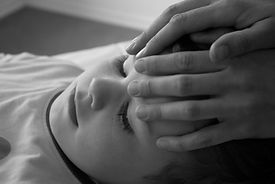OSTEOPATHY
"With feeling, thinking and knowing hands."
The forefathers of osteopathy
Osteopathy relies on the body's self-healing and regulatory powers; it is a manual therapy that looks to three main areas for the cause of illnesses or loss of mobility:
-
in the musculoskeletal area - bones, ligaments, joints
-
in the visceral area - the organ system
-
in the craniosacral area - from skull through spine
The osteopath's “tools” are the hands, which are guided by anatomical knowledge and experience, and can feel “blockages” and then loosen them, thus helping the body regain its natural balance and heal.
The aim is to find and treat an ailment's cause, which is often elsewhere than the symptoms.
STRUCTURAL OSTEOPATHY
Problems in the muscle and skeletal systems are solved using precise diagnosis and treatment techniques.
VISCERAL OSTEOPATHY
Visceral therapy is a branch of osteopathy and deals with the internal organs of the body. They are also connected both to one another via connective tissue structures and to our musculoskeletal system. Disorders - accidents, stress, or diet-related, etc. - can lead to a wide variety of symptoms, including those affecting the musculoskeletal system.
Visceral therapy is a manual, gentle mobilization that aims to restore mobility between the organs and their environment, to improve the function of the organ and to bring the body back to equilibrium.
CRANIOSACRAL OSTEOPATHY
This therapeutic approach mainly involves the skull and pelvis. Its areas of application include, for example, headaches, migraines, learning disorders, dizziness, chronic ear infections, jaw problems, etc.



